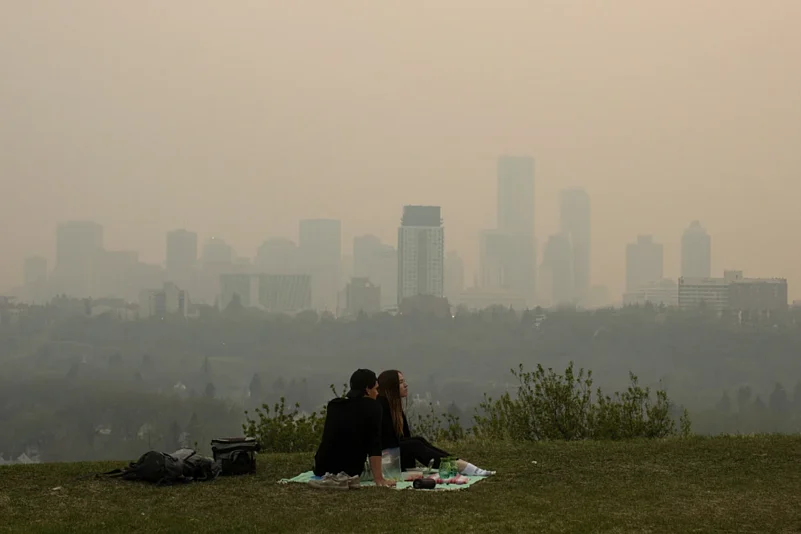Over 100 active wildfires raging in Canada have sent plumes of smoke drifting southward, blanketing several US states in a haze and prompting officials to issue the first air quality alert of the year in Minnesota on Sunday.
According to authorities, a significant number of the Canadian wildfires, about 40 out of the total 140, have been deemed "out of control," intensifying concerns over their containment. The bulk of these fires, precisely 91, are concentrated in the provinces of British Columbia and Alberta.
The repercussions of these wildfires have reverberated across the border, particularly impacting states from Montana to Wisconsin. However, Minnesota finds itself in the thick of it, grappling with heavy smoke concentrations on Sunday, which triggered the issuance of the state's inaugural air quality alert for 2024.
With Air Quality Index (AQI) levels ranging from 150 to over 200, the air quality in northern Minnesota has been deemed "unhealthy" and, at times, even dipped into the "very unhealthy" category. Bemidji, a northern Minnesota city, recorded an alarming AQI of 212, placing it among the worst air quality locations globally. Residents in the area reported smelling the smoke in the air, underlining the severity of the situation.
As the night progresses, Minneapolis braces for medium to heavy smoke levels, prompting authorities to advise residents, particularly those with allergies, to keep their windows shut overnight. By dawn on Monday, the intensity of the wildfire smoke is expected to diminish significantly, with medium levels extending from Wisconsin to southern Minnesota.
However, the impact of the wildfire smoke is not confined to Minnesota alone. By Monday evening, Omaha, Nebraska, is forecasted to experience hazier skies as the smoke continues its drift.
These occurrences shed light on the escalating concerns surrounding the health hazards posed by wildfire smoke across the United States. A study released in February warned that the situation is poised to deteriorate further. According to the First Street Foundation, by mid-century, an estimated 125 million Americans could face alarming health risks due to wildfire smoke exposure.
This isn't the first time North America has grappled with the consequences of Canadian wildfires. In June 2023, smoke from similar blazes enveloped parts of the Northeast and Midwest, triggering air quality alerts across 18 states. New York City, in particular, found itself atop the list of the world's worst air quality rankings.
The detrimental health effects of wildfire smoke are well-documented, affecting everyone but posing an especially grave risk to individuals with pre-existing health conditions. The Environmental Protection Agency (EPA) links wildfire smoke exposure to strokes, heart disease, respiratory issues, lung cancer, and premature death.


















